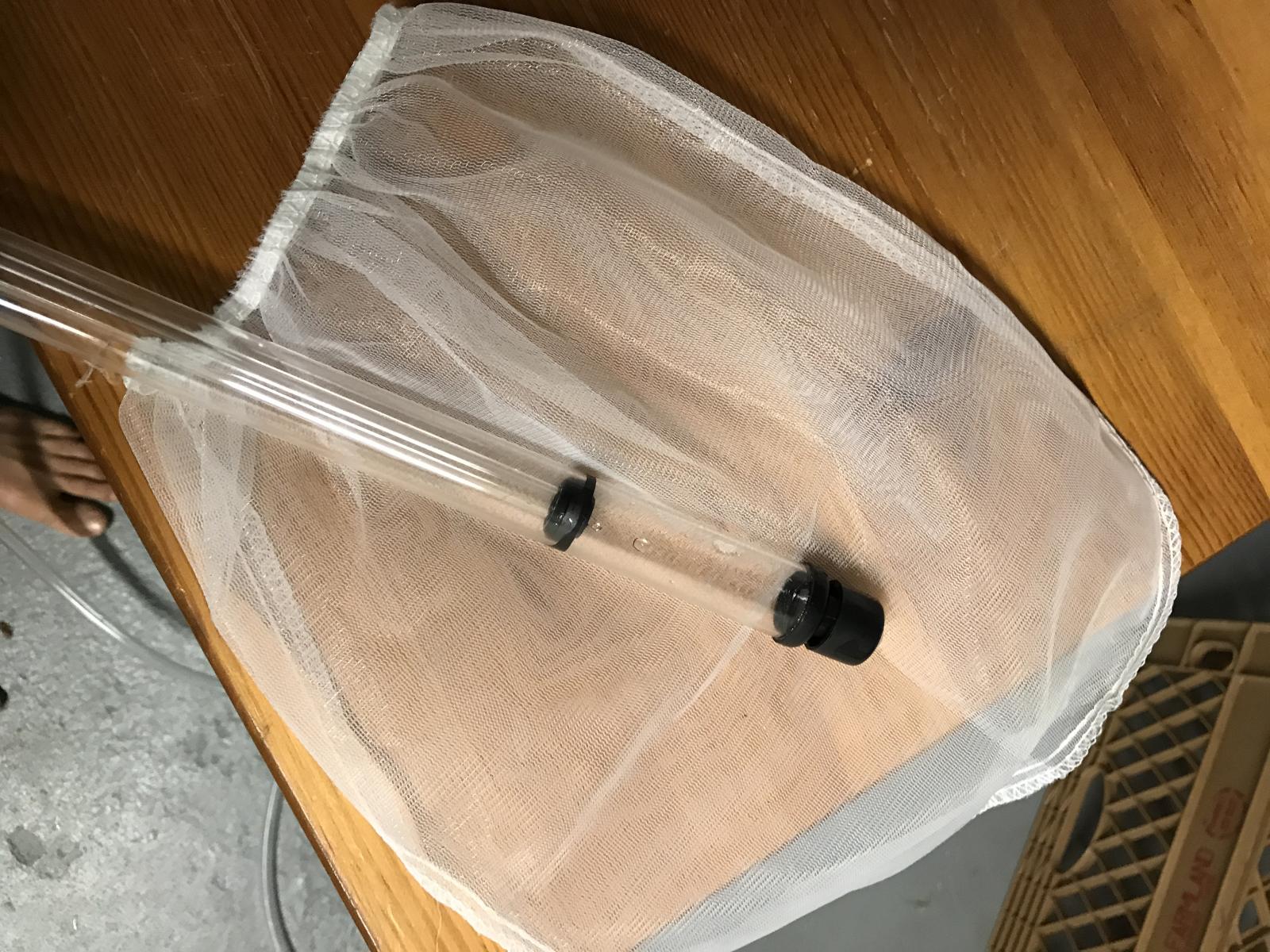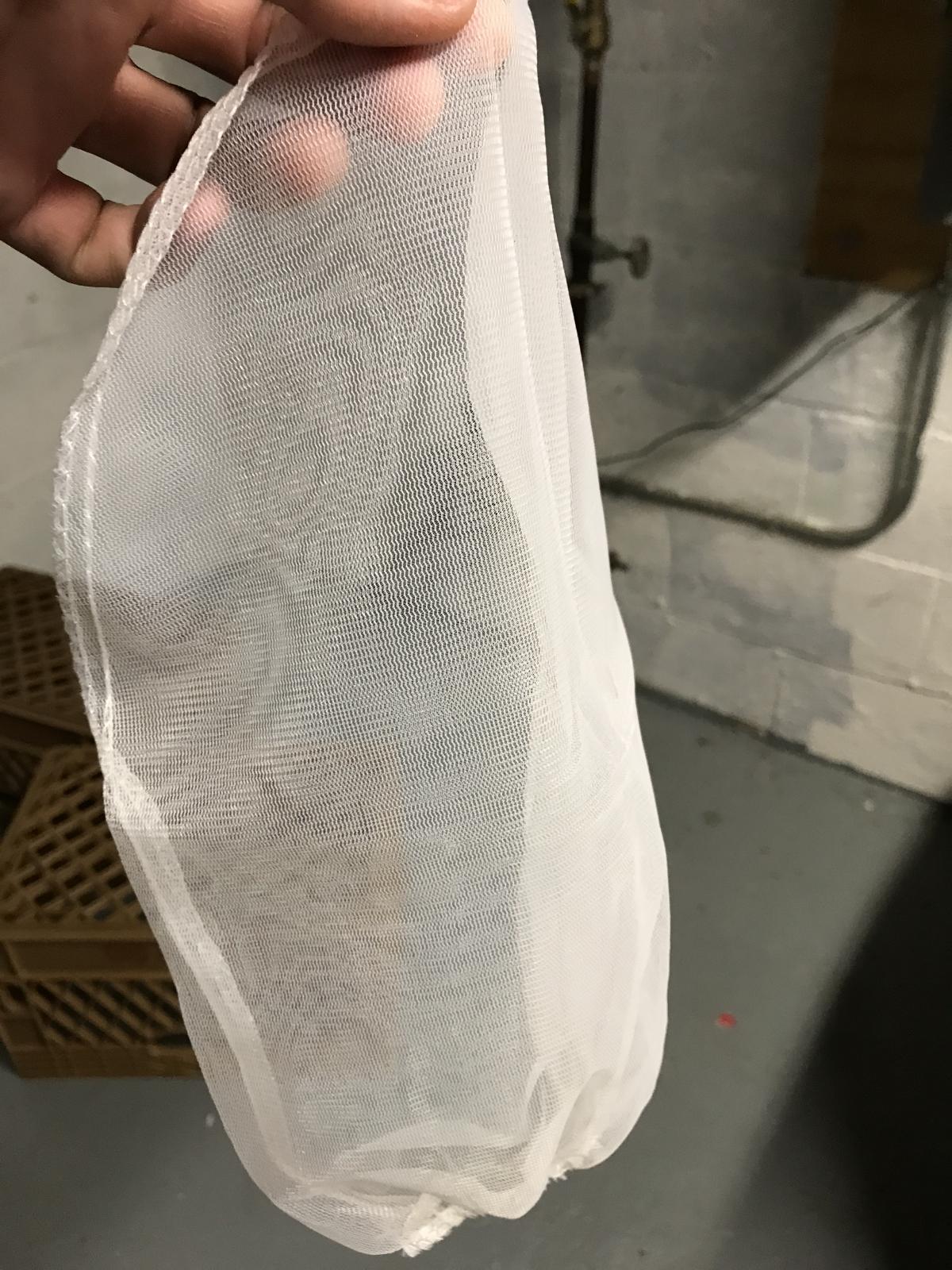So, yeah...I know this has been asked a ton on this forum. I've read a lot of threads on this topic and it seems like opinions are all over the map. Just dump 'em in...use a hops bag...muslin bag...paint strainer bag...marbles...stainless steel nuts, etc.
Couple things for my situation:
1. I have a narrow neck carboy. Does this make using any kind of a bag a problem?
2. I'm using pellet hops for the dry hoping.
3. This is for a Tank 7 clone. Saison.
4. Hops are Amarillo and Citra. 1 oz each.
Would like to balance what would be best for the beer with what can best minimize risk for a new brewer. Kind of lacking confidence after batch #1 early sampling returns seem unimpressive (although hopefully that changes with bottle conditioning).
Kind of like the idea of just dumping them in and saying the hell with the bag. Would there really be great risk of clog if I'm using pellets?
On the flip side, sanitizing a bag, dumping a couple nuts in there, notting it and adding hops into the bag, and dumping it in seems straightforward.
Although one question: If you dump the bag in do you pull the bag out? And how would you do that? Via string? Which is just left hanging in the beer or is it coming out of the carboy neck? Think most go right to bottling after dry hoping.
Anyways, any help would be appreciated.
Thanks
Couple things for my situation:
1. I have a narrow neck carboy. Does this make using any kind of a bag a problem?
2. I'm using pellet hops for the dry hoping.
3. This is for a Tank 7 clone. Saison.
4. Hops are Amarillo and Citra. 1 oz each.
Would like to balance what would be best for the beer with what can best minimize risk for a new brewer. Kind of lacking confidence after batch #1 early sampling returns seem unimpressive (although hopefully that changes with bottle conditioning).
Kind of like the idea of just dumping them in and saying the hell with the bag. Would there really be great risk of clog if I'm using pellets?
On the flip side, sanitizing a bag, dumping a couple nuts in there, notting it and adding hops into the bag, and dumping it in seems straightforward.
Although one question: If you dump the bag in do you pull the bag out? And how would you do that? Via string? Which is just left hanging in the beer or is it coming out of the carboy neck? Think most go right to bottling after dry hoping.
Anyways, any help would be appreciated.
Thanks
















![Craft A Brew - Safale BE-256 Yeast - Fermentis - Belgian Ale Dry Yeast - For Belgian & Strong Ales - Ingredients for Home Brewing - Beer Making Supplies - [3 Pack]](https://m.media-amazon.com/images/I/51bcKEwQmWL._SL500_.jpg)











































